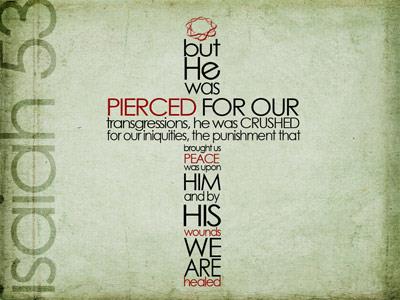-
The Resurrection Journey To Faith
Contributed by Owen Bourgaize on Nov 28, 2017 (message contributor)
Summary: Mary Magdalene’s world had collapsed on the crucifixion of Jesus and she came to the tomb Searching, Learning, Seeing and then Believing.
The resurrection of Jesus demands a personal response. Pollsters take pleasure in getting the opinion of the general public, asking, "Do you believe that Jesus rose from the dead?" They are keen to tell us: what percentage believe he actually physically came to life again; how many say he didn’t and those who don’t know. The pollsters take special pleasure in asking senior clergymen, with surprising results!
Yes, the resurrection is an event of history that demands that we have a view. Is it true or not? This is because it’s a fundamental fact of Christianity. It’s something the individual must face up to. It can either be a stumbling block or the stepping stone to true faith. The requirement for a response is found in the gospel stories, going back to the very first day after the crucifixion of Jesus.
The Jewish religious authorities didn’t want to spoil the high Sabbath of Passover, the most important day of the calendar, by having it polluted with the bodies of dead criminals hanging outside the city wall. It was important that the corpses be removed before nightfall. A soldier was detailed to make sure the three men who had been nailed to the crosses died in good time. The two thieves were still alive so their legs were smashed so they could no longer raise themselves to struggle for breath. But when the soldier came to Jesus, he was breathing no longer, but just to make sure, the soldier jabbed him in the side with his spear and out gushed blood and water. So much for the theory that Jesus didn’t rise from the dead because he didn’t die after all, but only swooned and somehow revived in the coolness of the tomb! What nonsense! Yes, Jesus was definitely dead.
The chief priests weren’t satisfied. Jesus was undoubtedly dead. And yet there was something in the back of their minds that disturbed them. They recalled that Jesus had said, "After three days I will rise again." They were afraid that the disciples of Jesus might just steal the body and tell the people that he had risen from the dead. They went to Pilate, the Roman governor, and persuaded him to post a guard over the tomb after it had been sealed to the satisfaction of the religious hierarchy. It all seemed so final.
But there was another group of people who were interested in Jesus. It was the little band of women who had been devoted in serving him. We’re told, "they had followed Jesus from Galilee to care for his needs." They had watched him on the cross, horrified and helpless, and now he was dead. The only service they could render was to his dead body! The male disciples were safely holed up behind locked doors, and one has to admire the courage of these women, such was their devotion to their Lord.
There was no thought in their minds that he would come to life again. We’re going to see how they responded to the great drama of the sequel to the crucifixion of Jesus. It tells how they changed from fear to faith, from tears to joy, from emptiness to belief. Mary Magdalene led that group of women (John 20;1-18). They had seen the burial party stoop to enter the tomb, taking the body of Jesus. When they emerged, they heaved into position the great boulder to block the entrance, and then the guard officially sealed it. To break the Roman seal was punishable by death!
Mary’s world had collapsed. She had lost hope and purpose. All that was left to her was to honour the memory of Jesus by embalming his body with spices. We’ll follow her as, early on the third day after the crucifixion, she made her way to the garden tomb. She was in for a glorious surprise as she made that essential progression from deep despondency to resurrection joy. It’s a journey of discovery we too need to make. But for Mary there came first the difficult experience of:
SEARCHING FOR JESUS
The gospel narrative tells us that the tomb was situated in a garden close by Calvary. Two thousand years after the event its exact location is a matter of some controversy. The Orthodox site is within the present walls of Jerusalem covered by the Church of the Holy Sepulchre, imposing but dark and encrusted with traditional art. But the site that appeals most to evangelical Christians is the "garden tomb", by the Damascus Gate, in a beautiful secluded garden. It’s described in the hymn as "the green hill … beside the city wall". To those of us who have seen the entrance hewn out of the rock-face, it captures the atmosphere of that far-off, first day of the week "when the women who had come with (Jesus) from Galilee" came with spices for the embalming of his body (Luke 23:55).

 Sermon Central
Sermon Central



